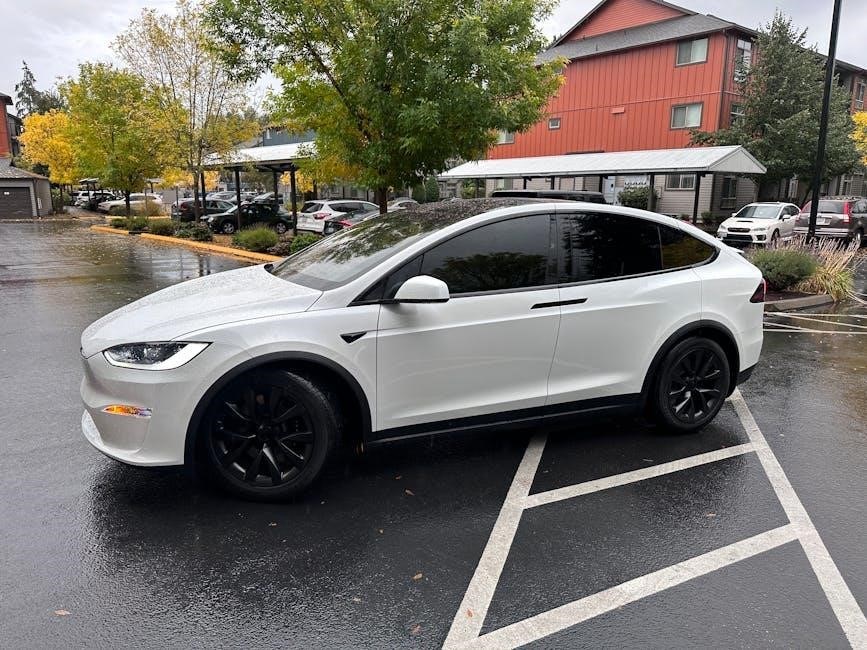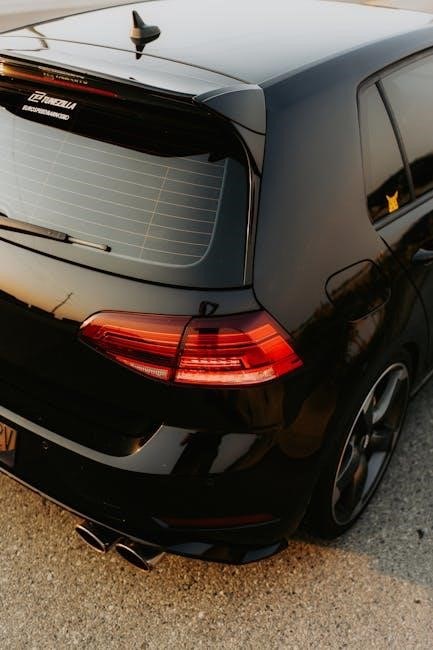
car tint guide
The Ultimate Car Tint Guide
Welcome to the ultimate guide on car tinting! This comprehensive resource is designed to help you understand the process, benefits, and best practices for enhancing your vehicle’s aesthetics and functionality. Whether you’re a DIY enthusiast or seeking professional advice, this guide covers everything you need to know about car window tinting, from selecting the right film to proper installation and maintenance.
Car tinting is a popular automotive modification that involves applying a thin, protective film to vehicle windows. This process enhances privacy, reduces glare, and blocks harmful UV rays, while also improving the overall aesthetic appeal of your car. With various tint shades and types available, drivers can customize their vehicles to suit personal preferences or comply with local regulations. Window tinting is not just about style; it offers practical benefits like heat reduction, fade protection for interiors, and increased safety by holding shattered glass together. Whether you’re aiming for a sleek, modern look or seeking functional improvements, car tinting is a versatile solution. This guide provides a detailed overview, helping you make informed decisions about selecting, installing, and maintaining window tint for your vehicle. By understanding the basics and following expert advice, you can enjoy the full advantages of a professionally tinted car. Discover how this simple upgrade can transform your driving experience and protect your investment for years to come.
Benefits of Car Window Tinting
Car window tinting offers a wide range of benefits that enhance both the functionality and aesthetics of your vehicle. One of the most significant advantages is UV protection, as high-quality tints can block up to 99% of harmful ultraviolet rays, safeguarding your skin and preventing interior fading. Heat reduction is another key benefit, with premium films capable of lowering cabin temperatures by up to 60%, which can reduce the need for air conditioning and improve comfort during long drives. Additionally, tinted windows minimize glare from the sun or headlights, enhancing visibility and driving safety. Privacy is also a major advantage, as tinting makes it difficult for outsiders to see into your vehicle, keeping valuables secure. Furthermore, window tint acts as a protective barrier, holding shattered glass together in the event of an accident, which can prevent injuries from sharp fragments. Finally, tinting gives your car a sleek, modern appearance, boosting its curb appeal; With these benefits, car window tinting is a practical and stylish upgrade for any vehicle.
Types of Car Tint Films

When it comes to car window tinting, there are several types of films available, each offering unique features and benefits. The most common types include dyed, metalized, carbon, and ceramic films. Dyed films are the most affordable and provide a sleek appearance, along with basic UV protection and heat reduction. Metalized films, on the other hand, contain metallic particles that enhance their reflective properties, offering superior heat rejection and a shiny finish. Carbon films are known for their dark color and ability to block UV rays effectively, while also providing consistent heat reduction without the metallic look. Ceramic films are the most advanced option, offering exceptional UV protection, heat reduction, and optical clarity without interfering with electronic signals like GPS or radio. Additionally, hybrid films combine different materials to offer a balance between performance and cost. Each type of tint film is designed to meet specific needs, whether it’s aesthetics, functionality, or budget. Understanding the differences helps you choose the best option for your vehicle.

How to Choose the Right Car Tint

Selecting the right car tint involves considering several factors to ensure it meets your needs and preferences. First, determine the level of UV protection and heat reduction you require, as different films offer varying levels of performance. Next, think about the aesthetic you want—tints come in a range of shades and finishes, from light to dark. It’s also important to check local laws regarding tint darkness to ensure compliance. Consider privacy needs, as darker tints provide more seclusion, while lighter options allow more visibility. Durability is another key factor, with premium films like ceramic offering longer lifespans compared to basic dyed films. Budget plays a role too, as prices vary significantly between film types. Additionally, consider whether you want-specialized features like glare reduction or improved shatter resistance. Finally, decide between DIY installation or professional service, as improper application can lead to bubbles or peeling. By weighing these factors, you can choose a tint that enhances your driving experience while fitting your lifestyle and budget. Always prioritize quality and compatibility with your vehicle for the best results.
Step-by-Step Car Tint Installation Guide

Installing car window tint requires precision and patience to achieve professional results. Start by thoroughly cleaning the window with soapy water and a razor blade to remove dirt, lint, and old adhesive. Next, measure the window and cut the tint film slightly larger than the glass using a precision knife or razor blade. Apply a soap-and-water solution to the exterior of the window to ensure the film adheres smoothly. Peel the backing from the tint and align it with the top edge of the window, using a credit card or squeegee to press the film firmly onto the glass, starting from the top and working downward to eliminate air bubbles. Use a utility knife to trim excess film around the edges, ensuring a snug fit. For curved windows, heat the film with a heat gun to mold it to the shape. Finally, inspect the installation for bubbles or imperfections and allow the tint to dry completely before using the vehicle. This process ensures a seamless and professional-looking finish, enhancing both functionality and aesthetics.
Tools and Materials Needed for Installation
Successfully installing car window tint requires the right tools and materials to ensure a professional finish. Essential items include a high-quality window tint film, specifically designed for automotive use, and a precision knife or razor blade for accurate cutting. A soap-and-water solution is necessary for applying the film, along with a squeegee or credit card to smooth out air bubbles. A razor blade or scraper is also needed to clean the window surface of dirt, lint, or old adhesive. Additional tools like a heat gun can be useful for molding the film around curved windows, while a utility knife helps trim excess tint around edges. Measuring tape ensures precise cuts, and a clean, lint-free cloth is handy for wiping surfaces. For a flawless installation, gather these materials beforehand to streamline the process. While basic tools suffice for most applications, specialized tools like a laser cutter or pre-cut tint kits can enhance accuracy, especially for complex window shapes.
Common Mistakes to Avoid During Installation


When installing car window tint, avoiding common mistakes is crucial for a professional finish. One of the most frequent errors is improper window cleaning, as dirt or lint can cause air bubbles or uneven adhesion. Always clean the window thoroughly with soapy water and scrape off old adhesive or debris. Another mistake is cutting the tint film too small, leaving gaps around the edges. Ensure the film is slightly oversized and carefully trimmed to fit the window’s contours. Rushing the process can lead to misalignment or wrinkles, so work methodically and take your time. Using the wrong tools, such as a dull knife, can result in jagged cuts or incomplete trimming. Additionally, applying the tint in direct sunlight or extreme temperatures can cause the film to stretch or bubble. Avoiding these pitfalls requires patience and attention to detail. By following proper techniques and using the right materials, you can achieve a smooth, bubble-free installation that enhances your vehicle’s appearance and functionality.
Car Tint Maintenance Tips

Proper maintenance is essential to ensure your car tint lasts for years and retains its functionality. Regular cleaning is key—use a soft, lint-free cloth and a mild soap solution to avoid scratching the film. Avoid using household cleaners, abrasive materials, or ammonia-based products, as they can damage the tint or cause discoloration. Inspect your tint periodically for small bubbles or scratches, addressing them early to prevent them from spreading. If you notice peeling or lifting edges, consult a professional for repairs to maintain the tint’s integrity. Avoid parking in direct sunlight for extended periods, as excessive heat can cause the adhesive to weaken. For freshly installed tint, wait at least 48 hours before cleaning or rolling down windows to allow the adhesive to fully bond. By following these maintenance tips, you can preserve the appearance and performance of your car tint, ensuring it continues to provide UV protection, heat reduction, and privacy for years to come.
Legal Considerations for Car Tinting
Before installing car window tint, it’s crucial to understand the legal regulations in your area. Laws regarding tint darkness and visibility vary by region and are enforced to ensure safety and law enforcement visibility. Most states specify minimum visible light transmission (VLT) percentages, which determine how dark the tint can be. For example, some states allow 50% VLT on side windows, while others may restrict it to 70%. Additionally, some jurisdictions prohibit certain types of tint, such as reflective or mirrored finishes. Medical exceptions exist in some areas for individuals with specific health conditions requiring darker tints. Penalties for non-compliance can include fines, removal of the tint, or even vehicle registration suspension. Always check local laws or consult with a professional installer to ensure compliance. Remember, legal standards are in place to balance privacy and safety, so adhering to them is essential to avoid legal issues and maintain road safety. Proper documentation and certification may also be required in certain cases. Stay informed to make informed decisions about your vehicle’s tinting needs. Legal compliance ensures both functionality and adherence to regional regulations.
